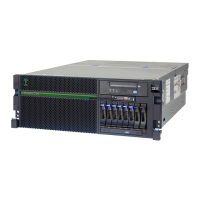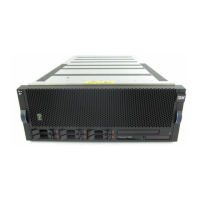Chapter 4. Continuous availability and manageability 167
when corrective actions must be automatically initiated by the system. These actions can
include the following items:
Requests for a part to be replaced
Dynamic invocation of built-in redundancy for automatic replacement of a failing part
Dynamic deallocation of failing components so that system availability is maintained
Device drivers
In certain cases, diagnostics are best performed by operating system-specific drivers, most
notably I/O devices that are owned directly by a logical partition. In these cases, the operating
system device driver often works in conjunction with I/O device microcode to isolate and
recover from problems. Potential problems are reported to an operating system device driver,
which logs the error. I/O devices can also include specific exercisers that can be invoked by
the diagnostic facilities for problem recreation if required by service procedures.
4.3.3 Reporting
In the unlikely event that a system hardware or environmentally induced failure is diagnosed,
IBM Power Systems servers report the error through several mechanisms. The analysis result
is stored in system NVRAM. Error log analysis (ELA) can be used to display the failure cause
and the physical location of the failing hardware.
With the integrated service processor, the system has the ability to automatically send out an
alert through a phone line to a pager, or call for service in the event of a critical system failure.
A hardware fault also illuminates the amber system fault LED, located on the system unit, to
alert the user of an internal hardware problem.
On POWER7+ processor-based servers, hardware and software failures are recorded in the
system log. When a management console is attached, an ELA routine analyzes the error,
forwards the event to the Service Focal Point (SFP) application running on the management
console, and has the capability to notify the system administrator that it has isolated a likely
cause of the system problem. The service processor event log also records unrecoverable
checkstop conditions, forwards them to the SFP application, and notifies the system
administrator. After the information is logged in the SFP application, if the system is properly
configured, a call-home service request is initiated and the pertinent failure data with service
parts information and part locations is sent to the IBM service organization.This information
will also contain the client contact information as defined in the IBM Electronic Service Agent
(ESA) guided setup wizard.
Error logging and analysis
When the root cause of an error is identified by a fault isolation component, an error log entry
is created with basic data such as the following examples:
An error code that uniquely describes the error event
The location of the failing component
The part number of the component to be replaced, including pertinent data such as
engineering and manufacturing levels
Return codes
Resource identifiers
FFDC data
Data that contains information about the effect that the repair will have on the system is also
included. Error log routines in the operating system and FSP can then use this information
